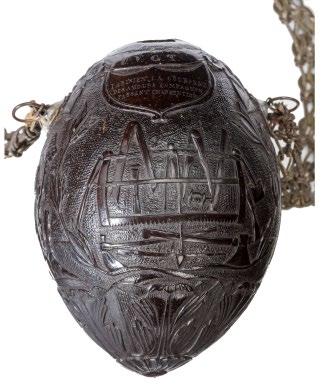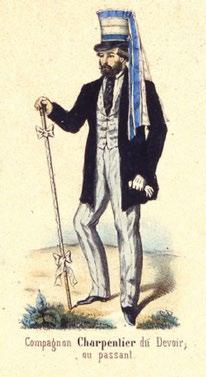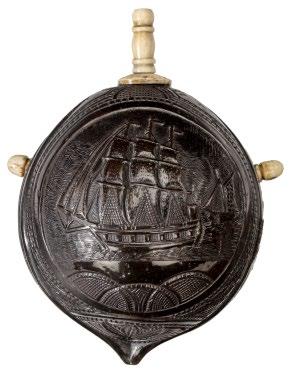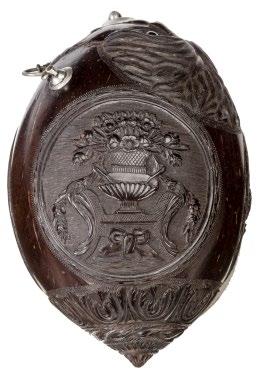
2 minute read
Coconut Shell ‘Bugbears’
24 A Group of sailors’ coconut shell ‘Bugbear’ powder flasks

Advertisement

“Bugbear” coconut shell powder flasks, were reputedly carved by sailors or marines who visited the East or West Indies in the late 18th/early 19th centuries, and had access to green coconut shells which were easier to carve than dried ones. There are examples of goblets and treen of similar workmanship attributed to French, English, Portuguese and Spanish sailors. Some, like the one above, are undoubtedly French, but others are harder to attribute. These bugbears served the double purpose of filling the long hours away from home, and creating curios and keepsakes for loved ones or even for sale. Other popular activities included incising scrimshaw, collecting shells (see page 30), creating Valentines and making ships’ models from carved bone nor even cut straw. (see page 22). The typical ‘bugbear’ was carved with a central decorative frieze and a human face or animal mask centred round the drainage hole which formed the mouth. On more expensive examples this was applied with a silver collar and stopper attached with a chain. Some had plaited carrying straps. Designs varied from ships and naval officers, often Admiral Nelson, romantic scenes of lovers, memento mori with graves and skulls, nostalgic views of home, flowers and musical trophies. The example above has a central frieze depicting fashionable men in a plantation of exotic trees and a ‘masonic’ trophy of carpenters’ tools, inscribed “UVGT: Parisien La Couronne des Amours Compagnon Passant Charpentier”. ‘Compagnons-Passants Charpentiers’ are a French guild of journeymen carpenters similar to freemasons. Such guilds were first formed in medieval times and part of their training included (as it does today) travelling to deploy their skills in other communities. The first mention of this particular group occurs in 1480, when they were received in Rhodes by the Grand Master of the Knights Hospitaller of St. John of Jerusalem. Their motto, UVGT, stands for ‘Union Vertu Genie Travail’ and they were recognisable by their long staffs, brightly coloured ribbons and tall hats.















